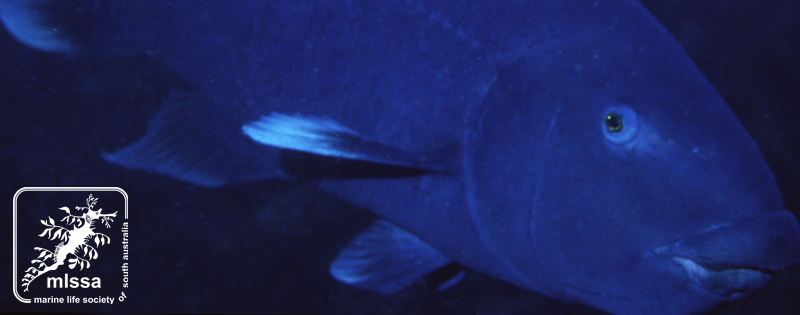Several members of the Marine Life Society of South Australia attended a talk hosted by Butterfly Conservation SA last night. The guest speaker was Professor Steve Donnellan from the South Australian Museum’s Evolutionary Biology Unit, who led us on a curious tour through the sexual hardware of a wide range of terrestrial, avian and marine species.
Diversity was the order of the day, and Steven made the point very clearly that the purpose of sex is to reproduce, and so long as the system works, no matter how ugly, awkward or strange, genetically speaking it’s a success. For self-taught amateur naturalists like myself and Emma Monceaux it was mind-boggling and I’m pleased to say that a variety of marine species were used to demonstrate the sexual pecularities of animal evolution.
Southern right whale (Eubalaena australis)
The largest of the marine species Steve mentioned was the Southern right whale. Steven informed us that this species’ testes can weight a whopping 900 kilograms- 1.4 percent of the animals body mass. Remarkably, the prize for largest investment in testes went to an amphibian, Dahl’s Treefrog, whose testes account for 14 percent of the animal’s body mass. Members of the audience and some amusing props were used to demonstrate the proportionality… a pair of roma tomatoes to represent human testes, a pair of grapefruit to represent those of a Southern Right whale and finally a pair of fully-inflated party balloons to represent Dahl’s treefrog’s. Steve went on to explain that the size of the testes in the treefrog suggest a very high level of sperm competition between males- meaning that multiple males sperm are likely to compete fiercely for the fertilisation of an egg mass.
New Zealand fur seal (Arctocephalus forsteri)
The New Zealand fur seal also earned a mention, after Steven described and discussed the occurrence of a bone within the canine penis. New Zealand fur seals also have a bone within the penis. He showed a curious example from a rather unfortunate fur seal whose penis bone had been broken, then healed in an awkward serpentine shape. Steven contemplated whether this improved or retarded his reproductive success. I guess in this instance we’ll never know- but the animal must have gone through a rather uncomfortable healing process in between matings.
Paper nautilus (Argonauta argo)
I’ve always found cephalopods among the most fascinating creatures and Steven’s example of the Paper nautilus was a welcome addition to the presentation. Apparently, the male, possibly responding to a chemical trigger, launches and releases its special reproductive arm at the female. Once detached, the arm does not return to the male- something akin to a harpoon or a missile fired during a broadside of ecstasy.
Fish, limpets and barnacles
The sequential hermaphroditic nature of some fish and molluscs was discussed, and Steven provided insights as to why this is likely to occur. Some fish retain dual sets of sexual organs, allowing one to dominate at any given time in their life. The Western Blue Groper is a local example of this, and one which Steven might like to mention in future talks. The Slipper limpet was provided as a molluscan example of this. Barnacles also came up during the presentation, as a demonstration of the difficulty sessile organisms can have when reproducing from fixed positions within a colony. Evidently barnacles in higher wave energy areas have much thicker penises- necessary for reaching, directing and hitting the target mate in difficult oceanic conditions!
Angler fish
Angler fish were used as an example of extremely disparate lives of males and females, and their relative sizes. The male angler fish operates something like a parasite, attaching itself to the female, and drawing its nutrition through the blood of the host female. The male larvae are not able to control where they initially attach to their female host, and some can end up in particularly unfortunate places, like attached to the angler’s lure! Not only would a male attached in this position be exposed to predation by the species the female is attracting to feed upon, but a male in this position is a long way from the female’s reproductive organs- a major reproductive disadvantage. Sex in the deep sea can be very weird, and not always wonderful!
Giant Australian cuttlefish (Sepia apama)
On Steven’s closing slide, he showed a delightful image of Sepia apama, the Giant Australian cuttlefish hatching. He told us that at this time, there would be millions of Sepia apama eggs under the rocky ledges of the reef at Point Lowly. While Steven didn’t go into detail about the kooky sex lives of Sepia apama, he did describe the importance of protecting the eggs, which represent an entire generation of the population, as both male and female adult cuttlefish die after mating, and mating occurs each winter.
I had hoped to ask Steven some questions about his ongoing work on the taxonomic status of the Northern Spencer Gulf population of Sepia apama, but it was a little off topic and time and circumstances did not allow for it. The talk was very well received by a full house (not unusual for a Butterfly Conservation SA event), there were many questions posed and answered and Professor Donnellan shared his expert knowledge in a fun and accessible way.

